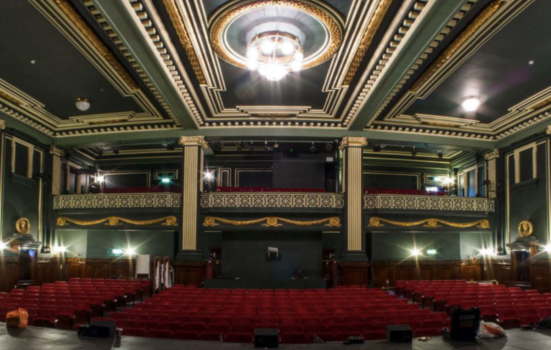The inclusion of Sheffield’s Abbeydale Picture House and Liverpool’s Epstein Theatre takes the list’s total of theatres at risk of permanent closure, redevelopment, or demolition to 39.

Ian Grundy
The Theatres Trust has added two theatre buildings to its Theatres at Risk register.
Abbeydale Picture House in Sheffield and Epstein Theatre in Liverpool are the latest additions, taking the total to 39. This is one up on last year, after the Dudley Hippodrome was removed due to demolition.
Now in its 18th year, the annually-published list profiles theatres under threat of permanent closure, redevelopment, or demolition across the UK.
READ MORE:
Abbeydale Picture House is a Grade-II listed former cine-variety theatre built in 1920.
Its building fabric has significantly deteriorated in recent years leaving its main auditorium unusable. Theatres Trust says urgent action is required to repair the roof and prevent further deterioration.
Constructed in 1913, Liverpool’s Epstein Theatre has been closed since last June. Both Liverpool City Council and operator Epstein Entertainments Ltd have been unable to agree new lease terms with the building landlord, leaving it currently vacant.
Liverpool City Council’s Cabinet Member for Culture, Councillor Harry Doyle, says the council welcomes the move to add the Epstein to the list “as this offers renewed hope for this extraordinary space”.
“In their role as intermediary, the Theatres Trust can now ensure there are productive conversations between the commercial landlord and any potential operators, with the shared ambition to find a positive solution which would see this important cultural asset reopening its doors,” Doyle added.
Dudley Hippodrome was demolished last August to make way for a new university building. Theatres Trust objected to the demolotion, but an appeal to then Secretary of State for Levelling Up, Housing and Communities was refused.
Built in the 1930s, the hippodrome was the only remaining lyric theatre in the Metropolitan Borough of Dudley.
Jon Morgan, Director of the Theatres Trust, says the changes to this year’s register “represent the wider issues we are seeing across the theatre sector”.
“Squeezes on local authority budgets means many are stepping away from or significantly reducing funding to theatres, while rising costs and scarcity of funding is making it harder to repair, maintain and update buildings,” he added.
“We believe that all of these buildings are worth the investment, not only as valuable social and cultural facilities but also for their potential contribution to wider placemaking and regeneration.”
Progress for other theatres
Theatres Trust says that while no theatres were removed from the list for positive reasons this year, “slow but steady” progress is being made at several buildings.
Some of the buildings receive support through Theatres Trust’s Resilient Communities programme, offering grants, training and expert advice.
Examples include a grant for engagement activities and market testing for a new vision at Theatre Royal Margate, governance training for Spilsby Sessions House while it embarks on a major capital works project and consultancy advice for Leith Theatre as they take on a new lease for the building.
Leith Theatre’s Chief Executive Lynn Morrison said the targeted expertise and mentoring has “helped us to navigate the business, unravel our next steps and reveal answers we didn’t know we needed”.
“The significance of our inclusion on the register feels vital and allows us to share our narrative authentically as we move in a positive direction. The register allows us to highlight our plight and the risk of losing the venue forever unless we invest in its restoration and redevelopment, while emphasising the ongoing need for support,” Morrison added.
Since the list began in 2006, more than 80 theatres have been restored, revived or had a suitable replacement built.




